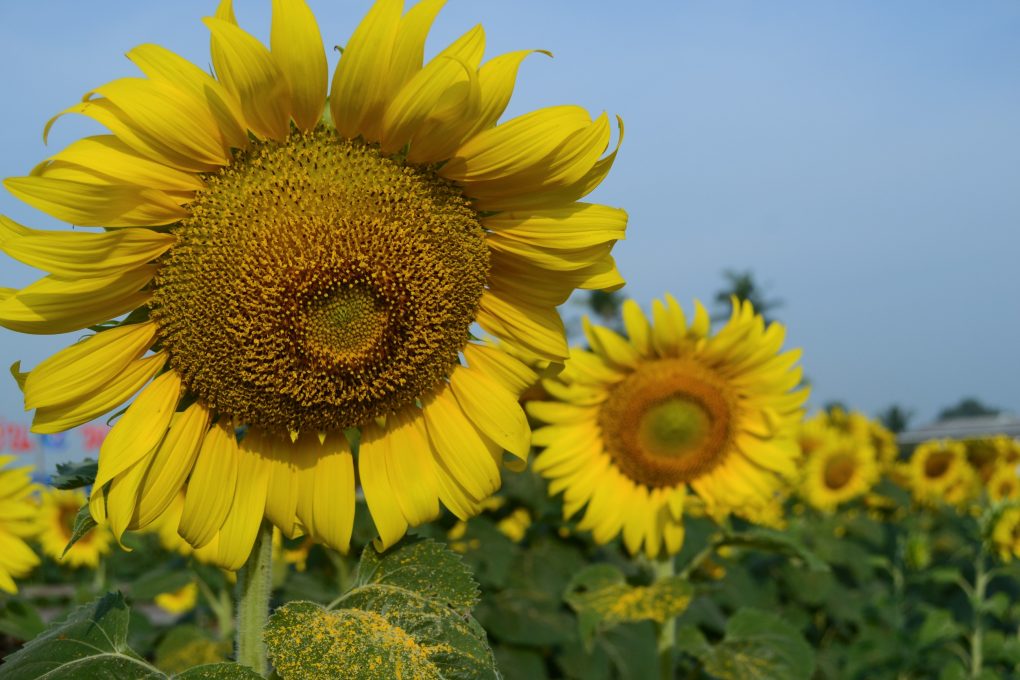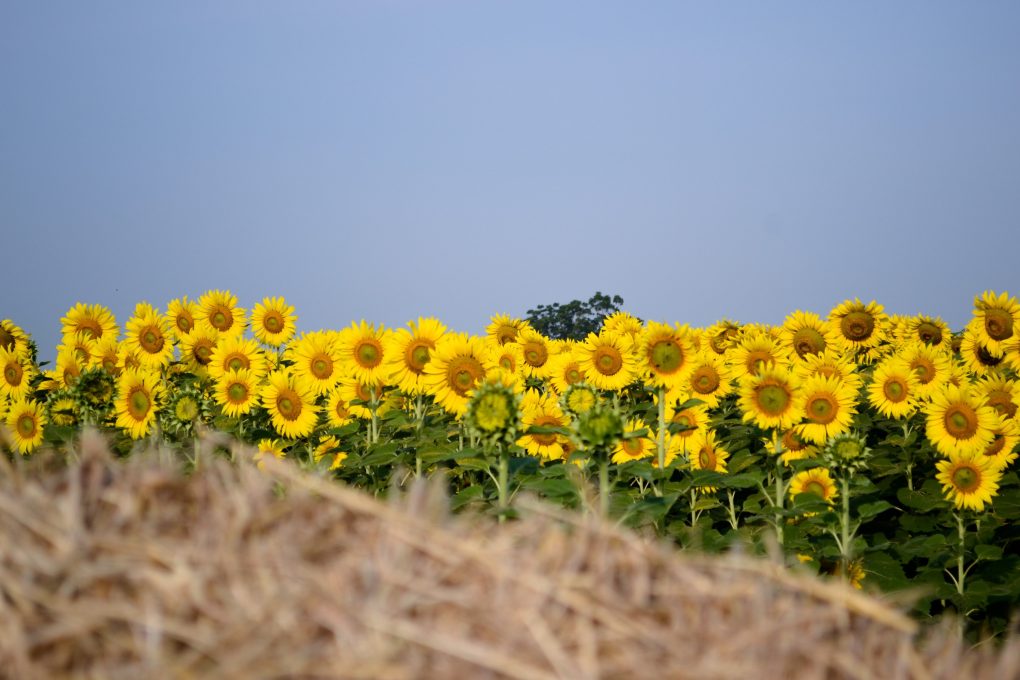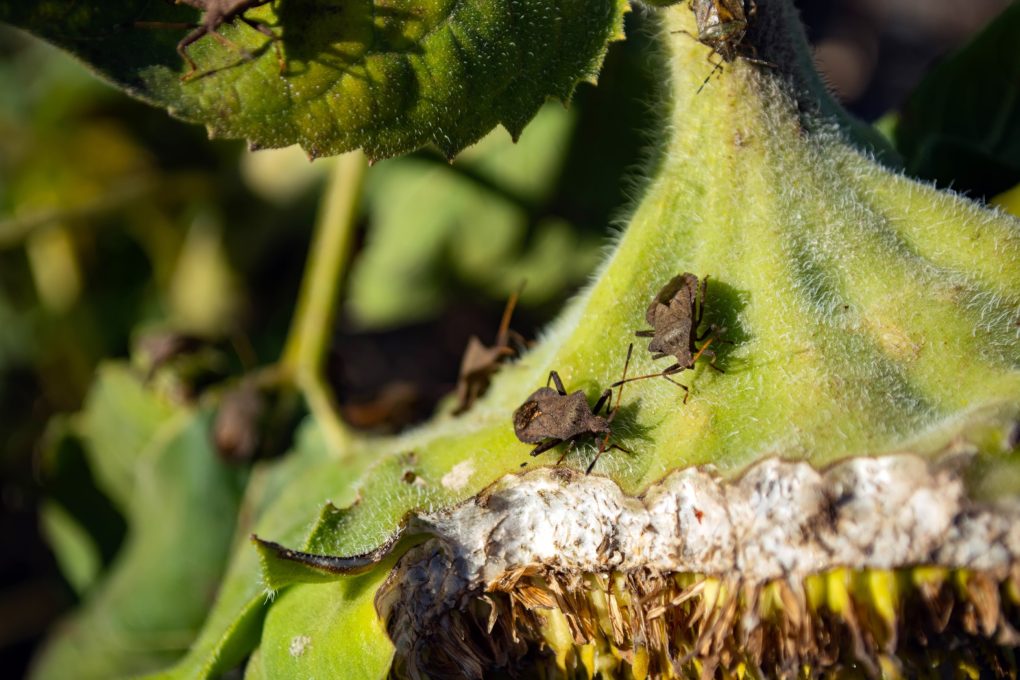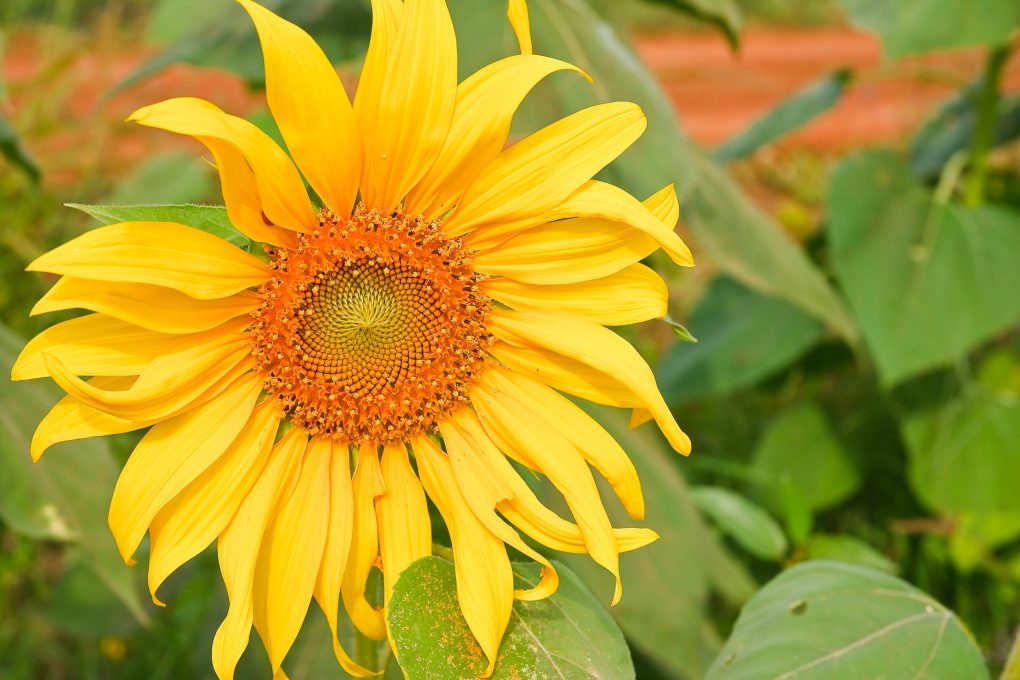Are Giant Sunflowers Easy to Grow? Expert Answers
Giant sunflowers are easy to grow, making them attractive for gardeners of all skill levels. These sunflowers (Helianthus annuus) thrive in various soil types, prefer full sun, and require minimal maintenance beyond watering and occasional fertilizing.

To promote healthy growth, plant the seeds in well-draining soil and space them approximately 2 feet apart to give the large plants enough room. Consistent watering, especially in dry conditions, and using a balanced fertilizer for necessary nutrients are essential. By following these simple guidelines, most gardeners can successfully cultivate giant sunflowers.
Table of Contents
Climate and Soil Requirements
Although giant sunflowers are relatively easy to grow, they have specific climate and soil requirements. They thrive in warm, sunny climates with temperatures ranging from 70 to 78 degrees Fahrenheit. Well-draining soil rich in organic matter is necessary.

The ideal soil pH level for growing giant sunflowers is 6.0 and 7.5, slightly acidic to somewhat alkaline. Adjust the soil’s pH level by adding lime to raise it if it is too acidic or sulfur to lower it if it is too alkaline.
Choosing a location that receives full sun, with at least six hours of direct sunlight per day, is crucial. Additionally, protecting the plants from strong winds is necessary to prevent bending or breaking.
In colder regions, ensure that the soil is warm enough before planting. The soil temperature should be at least 60 degrees Fahrenheit. Therefore, starting the seeds indoors and transplanting them outside once the soil has warmed up is recommended.
Choosing the Right Variety
Giant sunflowers are popular due to their impressive height and size. However, selecting the right variety is crucial for successful growth. Consider the height and flower size of each variety when making a choice. If space is limited, opt for a shorter variety. A variety like Paul Bunyan is the right choice for the tallest sunflowers.
Also, consider the growing conditions in your area. Some varieties may be more resistant to pests or diseases or have specific water and sunlight requirements. Research the requirements of each variety before making a final decision.
Lastly, check the availability of seeds, especially if you’re looking for organic or heirloom options. Local nurseries or seed suppliers can provide information on what’s available in your area.
Planting and Germination

Seed Preparation
Before planting giant sunflower seeds, soak them in water for 12 hours. This process softens the seed coat and aids germination.
Planting Techniques
Choose a location with full sun and well-draining soil for planting giant sunflowers. Plant the seeds no more than an inch deep and about 6 inches apart. Once the seedlings reach 6 inches in height, thin them out, leaving the strongest plants about 12 inches apart. For continuous blooms, stagger your planting by sowing a new row of seeds every two to three weeks, starting in the spring.
Germination Process
Giant sunflowers typically take between 7 to 21 days to germinate after planting. During this time, keep the soil moist but not waterlogged. Thin out the seedlings to provide enough space for each plant to grow.
Planting and germinating giant sunflowers can be relatively easy if done correctly. By following these simple steps, gardeners can enjoy the beauty and majesty of these towering plants in their backyard.
Watering and Fertilization

Regular watering and fertilization are essential to ensure giant sunflowers reach their full potential. Here are some tips on how to water and fertilize your sunflowers:
Watering Frequency
When the sunflower is small, water the area around the roots, about 4 inches from the plants. As the plant becomes established, water deeply but infrequently to allow deep root growth. Water the plant once a week with several gallons of water per plant, increasing frequency in extremely dry or hot conditions.
Avoid over-watering, as it can cause root rot and stunt growth. Ensure the soil is well-draining, preventing waterlogging.
Fertilizer Types and Application
Before planting, enrich the soil and keep it well-fed. Sunflowers are hungry plants, and giant hybrids require even more nutrients. Ensure the soil isn’t compacted to support fast, consistent growth.
Adding nitrogen fertilizer contributes to overall green growth and increases the plant’s height. This is especially important for home gardeners growing giant varieties. Feed your sunflowers twice weekly with diluted fish emulsion or another balanced flower fertilizer, combining fertilizing and watering tasks. Small plants need a couple of gallons of diluted fertilizer per week, while larger plants require more.
If you over-fertilize, your plants will produce more foliage at the expense of flowers. It is important to follow the instructions on the fertilizer packaging carefully and not apply too much at one time.
Pest and Disease Control

Common Pests
While giant sunflowers are generally resistant to pests, some common ones may affect them, including:
- Aphids
- Cutworms
- Slugs and snails
- Seed weevils
To control aphids, spray the plants with a strong stream of water or insecticidal soap. Prevent cutworm damage by placing collars around the base of the plants or using insecticides. Control slugs and snails with baits or by manually removing them. Remove and destroy infected plants and use insecticides to control seed weevils.
Common Diseases
Giant sunflowers are susceptible to fungal diseases, such as:
- Downy mildew
- Rust
- Powdery mildew
To control fungal diseases, spray infected leaves with a general garden fungicide. Remove and destroy infected plants to prevent disease spread.
Preventive Measures
Take preventive measures to avoid pest and disease problems:
- Plant sunflowers in well-drained soil with good air circulation.
- Water sunflowers at the base to avoid wetting the leaves.
- Avoid overcrowding.
- Clean up plant debris and dispose of it properly.
- Rotate crops to prevent soil-borne diseases.
Harvesting and Storage

When to Harvest
Giant sunflowers are ready for harvest when the back of the flower head turns yellow, the petals have fallen off, and the seeds are plump and dark. Ensure the flower head is facing down for full seed maturity. Harvest on a dry and sunny day to prevent mold growth.
How to Harvest
Cut the flower head off the stem using pruning shears or a sharp knife to harvest the seeds. Leave a few inches of stem attached to the flower head. Gently shake the flower head to remove any loose seeds. Use your fingers or a fork to remove the remaining seeds.
Storage Tips
To store sunflower seeds, place them in a dry and cool place. An airtight container or a paper bag works well. Label the container with the harvest date. Sunflower seeds can last up to six months in storage. You can freeze them for up to a year in an airtight container. Before storing seeds, make sure they are completely dry to prevent mold growth, which can harm human health.
Overall, harvesting and storing giant sunflower seeds is a simple process that anyone can do. You can enjoy delicious and nutritious seeds for months with proper care and attention.
